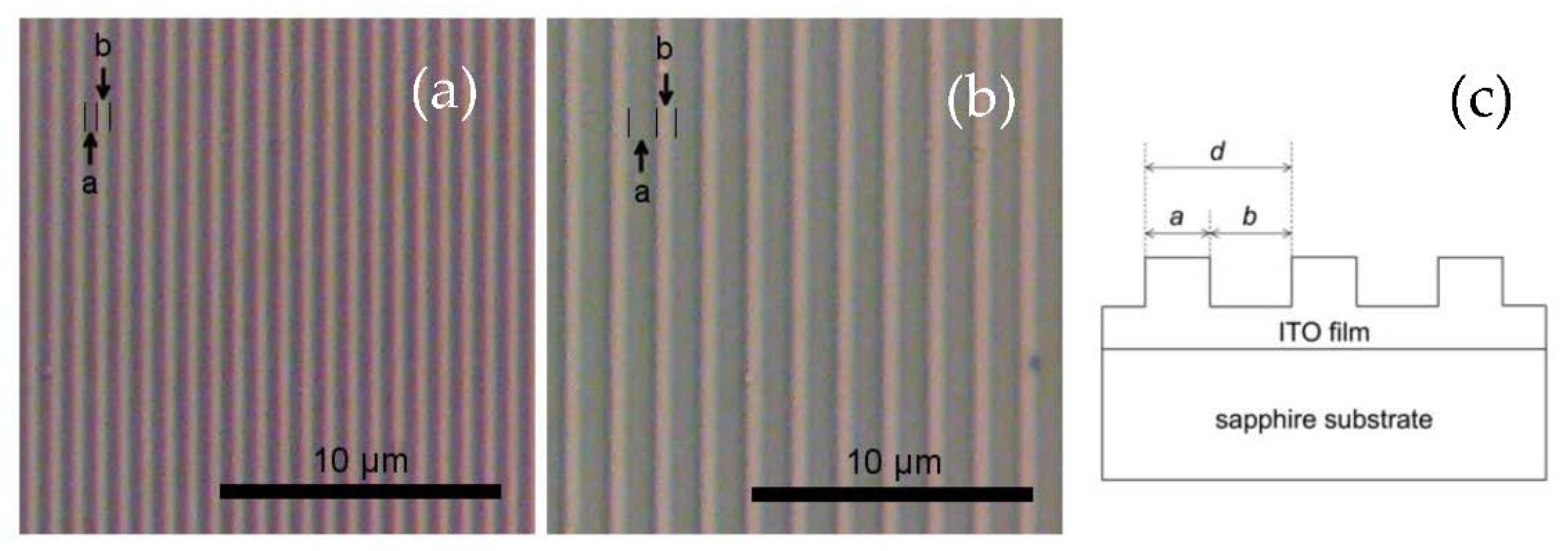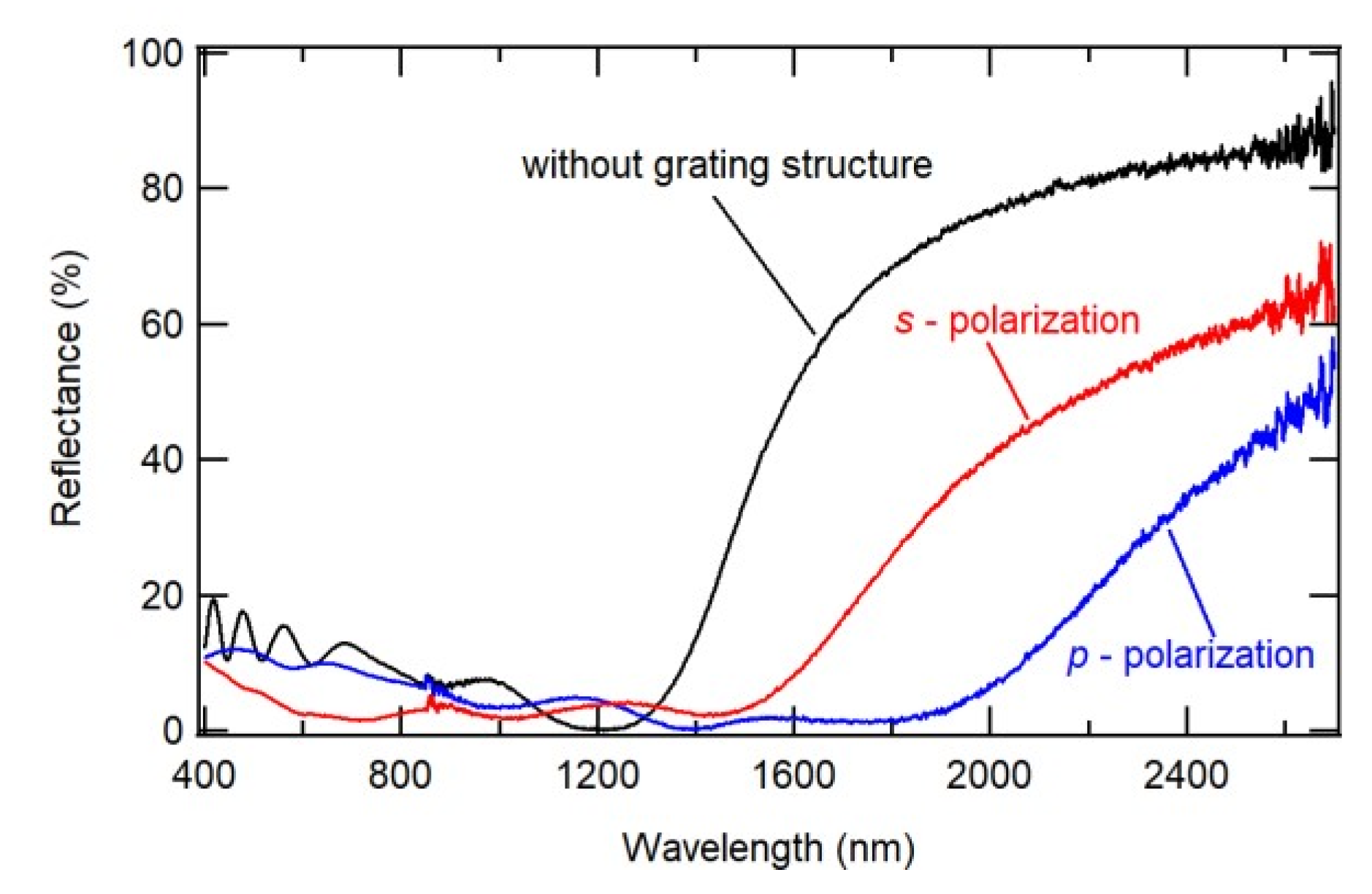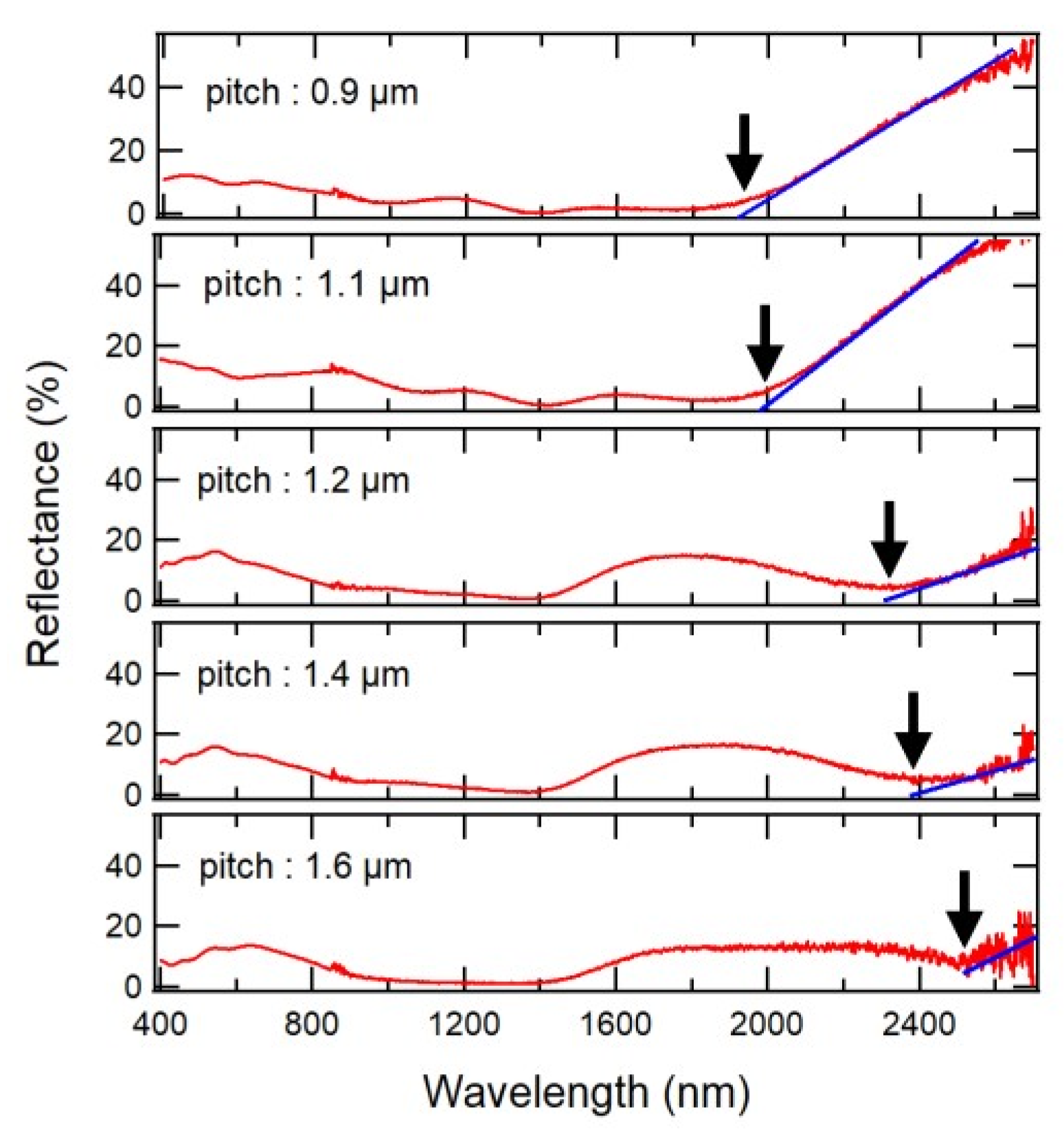Surface Plasmon Resonances in Sn: In2O3 Thin Films with Diffraction Grating †
Abstract
:1. Introduction
2. Materials and Methods
3. Results and Discussion
4. Conclusions
References
- Morichika, I.; Kusa, F.; Takegami, A.; Sakurai, A.; Ashihara, S. Antenna-Enhanced Nonlinear Infrared Spectroscopy in Reflection Geometry. J. Phys. Chem. C 2017, 121, 11643–11649. [Google Scholar] [CrossRef]
- Matsui, H.; Furuta, S.; Tabata, H. Role of electron carriers on local surface plasmon resonances in doped oxide semiconductor nanocrystals. Appl. Phys. Lett. 2014, 104, 211903. [Google Scholar] [CrossRef]
- Wolf, N.; Gerstenlauer, D.; Manara, J. Modelling the spectral reflectances of miscellaneous ITO coating by using only the Drude theory. J. Phys. Conf. Ser. 2012, 395, 012064. [Google Scholar] [CrossRef]
- Look, D.C.; Leedy, K.D. Optical measurements and mapping in Ga- and Al-doped ZnO and Sn-doped In2O3. Phys. Status Solidi A 2015, 212, 1427–1432. [Google Scholar] [CrossRef]
- Choi, J.H.; Kang, S.H.; Oh, H.S.; Yu, T.H.; Sohn, I.S. Design and characterization of Ga-doped indium tin oxide films for pixel electrode in liquid crystal display. Thin Solid Films 2013, 527, 141–146. [Google Scholar] [CrossRef]
- Berginc, M.; Campa, A.; Vojisavljevic, K.; Malic, B.; Panjan, P.; Topic, M. Relation between sputtering parameters and optical electrical properties of Ga doped ITO transparent conductive oxide. Energy Procedia 2015, 84, 183–189. [Google Scholar] [CrossRef]



| Designed Value | Measured Value | Difference |ddesign − dmeasured|/ddesign | |
|---|---|---|---|
| ddesign (μm) | dmeasured (μm) | Δ (%) | |
| grating 1 | 0.9 | 0.84 ± 0.03 | 6.7 |
| grating 2 | 1.1 | 1.05 ± 0.03 | 4.5 |
| grating 3 | 1.2 | 1.25 ± 0.03 | 4.2 |
| grating 4 | 1.4 | 1.36 ± 0.03 | 2.9 |
| grating 5 | 1.6 | 1.67 ± 0.04 | 4.4 |
Publisher’s Note: MDPI stays neutral with regard to jurisdictional claims in published maps and institutional affiliations. |
© 2018 by the authors. Licensee MDPI, Basel, Switzerland. This article is an open access article distributed under the terms and conditions of the Creative Commons Attribution (CC BY) license (https://creativecommons.org/licenses/by/4.0/).
Share and Cite
Hasuike, N.; Ochiai, S.; Iwakiri, R.; Takeda, M.; Yoo, W.S.; Isshiki, T. Surface Plasmon Resonances in Sn: In2O3 Thin Films with Diffraction Grating. Proceedings 2018, 2, 1034. https://doi.org/10.3390/proceedings2131034
Hasuike N, Ochiai S, Iwakiri R, Takeda M, Yoo WS, Isshiki T. Surface Plasmon Resonances in Sn: In2O3 Thin Films with Diffraction Grating. Proceedings. 2018; 2(13):1034. https://doi.org/10.3390/proceedings2131034
Chicago/Turabian StyleHasuike, Noriyuki, Saito Ochiai, Ryotaro Iwakiri, Minoru Takeda, Woo Sik Yoo, and Toshiyuki Isshiki. 2018. "Surface Plasmon Resonances in Sn: In2O3 Thin Films with Diffraction Grating" Proceedings 2, no. 13: 1034. https://doi.org/10.3390/proceedings2131034
APA StyleHasuike, N., Ochiai, S., Iwakiri, R., Takeda, M., Yoo, W. S., & Isshiki, T. (2018). Surface Plasmon Resonances in Sn: In2O3 Thin Films with Diffraction Grating. Proceedings, 2(13), 1034. https://doi.org/10.3390/proceedings2131034





